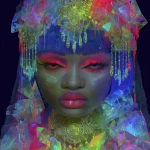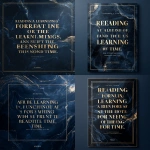Explore the Best AI Image Gallery

The AI Palette: How Artificial Intelligence is Transforming Graphic Design
The world of graphic design is undergoing a seismic shift, driven by the rapid advancements in artificial intelligence (AI). From generating stunning visuals to streamlining workflows, AI tools are reshaping how designers create and collaborate. This blog post delves into the fascinating intersection of AI and graphic design, exploring its transformative impact, potential applications, ethical considerations, and future trends.
The Rise of AI-Powered Design Tools
A plethora of AI-powered design tools have emerged, empowering designers with unprecedented capabilities. These tools leverage machine learning algorithms to analyze vast datasets of images, typography, and design principles, enabling them to generate original designs, suggest creative concepts, and automate repetitive tasks.
Applications of AI in Graphic Design
- Logo and Brand Identity Creation: AI can assist in generating logo concepts based on a brands values, target audience, and industry.
- Visual Content Generation: AI-powered platforms can create illustrations, icons, social media graphics, and even website layouts based on user input or specific themes.
- Image Editing and Manipulation: AI algorithms can enhance images, remove backgrounds, retouch imperfections, and even generate variations of existing images.
- Typography Design: AI can suggest font pairings, generate unique typefaces, and optimize typography for readability across different platforms.
The Benefits of Integrating AI into Graphic Design
AI offers a range of benefits for graphic designers:
- Increased Efficiency: AI automation can streamline repetitive tasks, freeing up designers to focus on more creative and strategic aspects of their work.
- Enhanced Creativity: AI tools can provide inspiration, generate novel ideas, and push the boundaries of traditional design approaches.
- Personalized Design Experiences: AI algorithms can tailor designs to specific user preferences, creating personalized experiences for customers.
- Data-Driven Insights: AI can analyze design trends, user behavior, and market data, providing valuable insights for informed decision-making.
Ethical Considerations in AI-Driven Design
As AI becomes increasingly integrated into graphic design, its crucial to address the ethical implications:
- Bias and Fairness: AI algorithms can perpetuate biases present in the training data, leading to unfair or discriminatory design outcomes. Its essential to ensure that AI tools are trained on diverse datasets and regularly audited for bias.
- Transparency and Explainability: The decision-making processes of AI algorithms can be opaque, making it difficult to understand how designs are generated. Strive for transparency in AI-driven design processes to build trust and accountability.
- Intellectual Property Rights: The ownership and copyright of AI-generated designs raise complex legal questions. Establish clear guidelines and regulations to address these issues.
- Job Displacement: While AI can automate certain tasks, its important to consider the potential impact on employment in the design industry. Upskilling and reskilling programs can help designers adapt to the evolving landscape.
Future Trends in AI-Powered Graphic Design
The future of AI in graphic design holds exciting possibilities:
- More Sophisticated Generative Capabilities: AI will continue to advance, enabling the creation of even more realistic, imaginative, and personalized designs.
- Personalized Design Experiences: AI will play a key role in tailoring design solutions to individual user preferences and contexts.
- Augmented Reality (AR) and Virtual Reality (VR) Integration: AI-powered design tools will seamlessly integrate with AR and VR, creating immersive and interactive design experiences.
- Ethical Design Frameworks: As AI becomes more prevalent, the development of robust ethical frameworks for AI-driven design will be crucial.
Conclusion
AI is revolutionizing graphic design, empowering designers with new tools and capabilities. By embracing these advancements while addressing ethical considerations, we can unlock the full creative potential of AI and shape a future where design becomes even more innovative, personalized, and impactful.





](https://images.ai-img.art/thumbnails/150/26c16e4f635deee86633de398088ca98d9bb748d6e7601436b07e882fab236cb.webp)

](https://images.ai-img.art/thumbnails/150/1202074d0d60b08b64d0f91f36468608aaac200a02b721cc8e6d8ec8a908432c.webp)






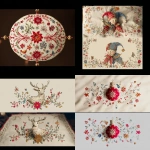





](https://images.ai-img.art/thumbnails/150/6c909fd6d38caac6572b592dd97831deb7d6562bba142798574677582676dfc1.webp)
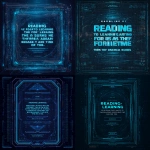



](https://images.ai-img.art/thumbnails/150/e6a179db327f0374ec327d0fdab48ac1f2dc47123eed103b0a41ed346280d07d.webp)

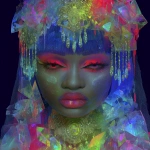
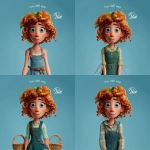

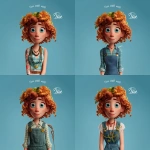


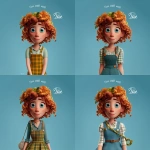

](https://images.ai-img.art/thumbnails/150/655229c40961cb7ff5abd4b4190e02c94ea1a961106e7547a562649c945268be.webp)



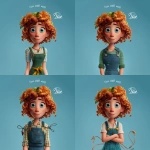
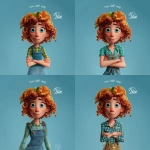

](https://images.ai-img.art/thumbnails/150/60973df1d727dbbf8e6922b7e4836814ab6012106eb9dcfe99aea7aec15f3710.webp)
](https://images.ai-img.art/thumbnails/150/184b4b030e30be0a6d51b544226cb4cf2271977814d935d3aaa2b7529355b3b7.webp)
